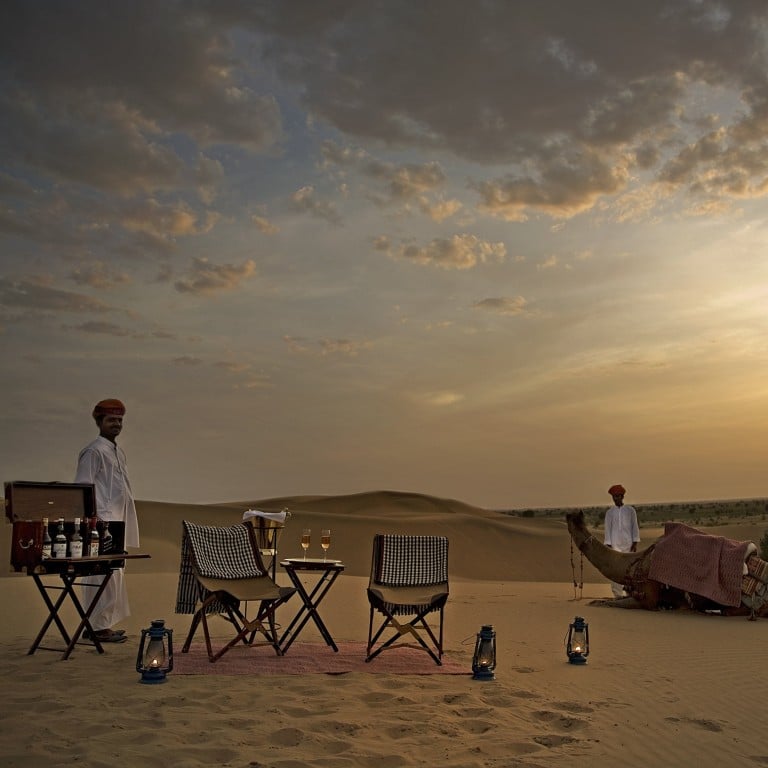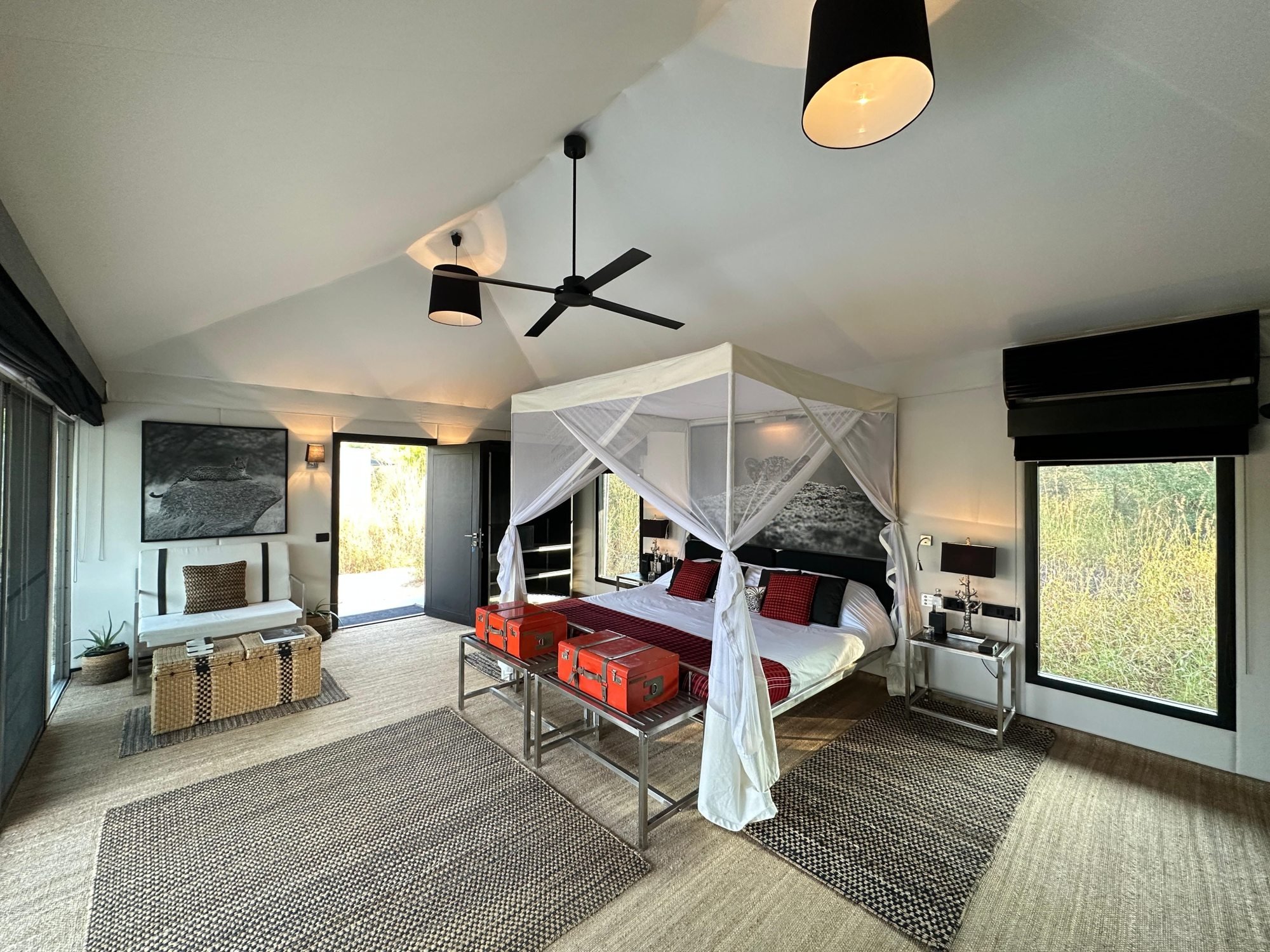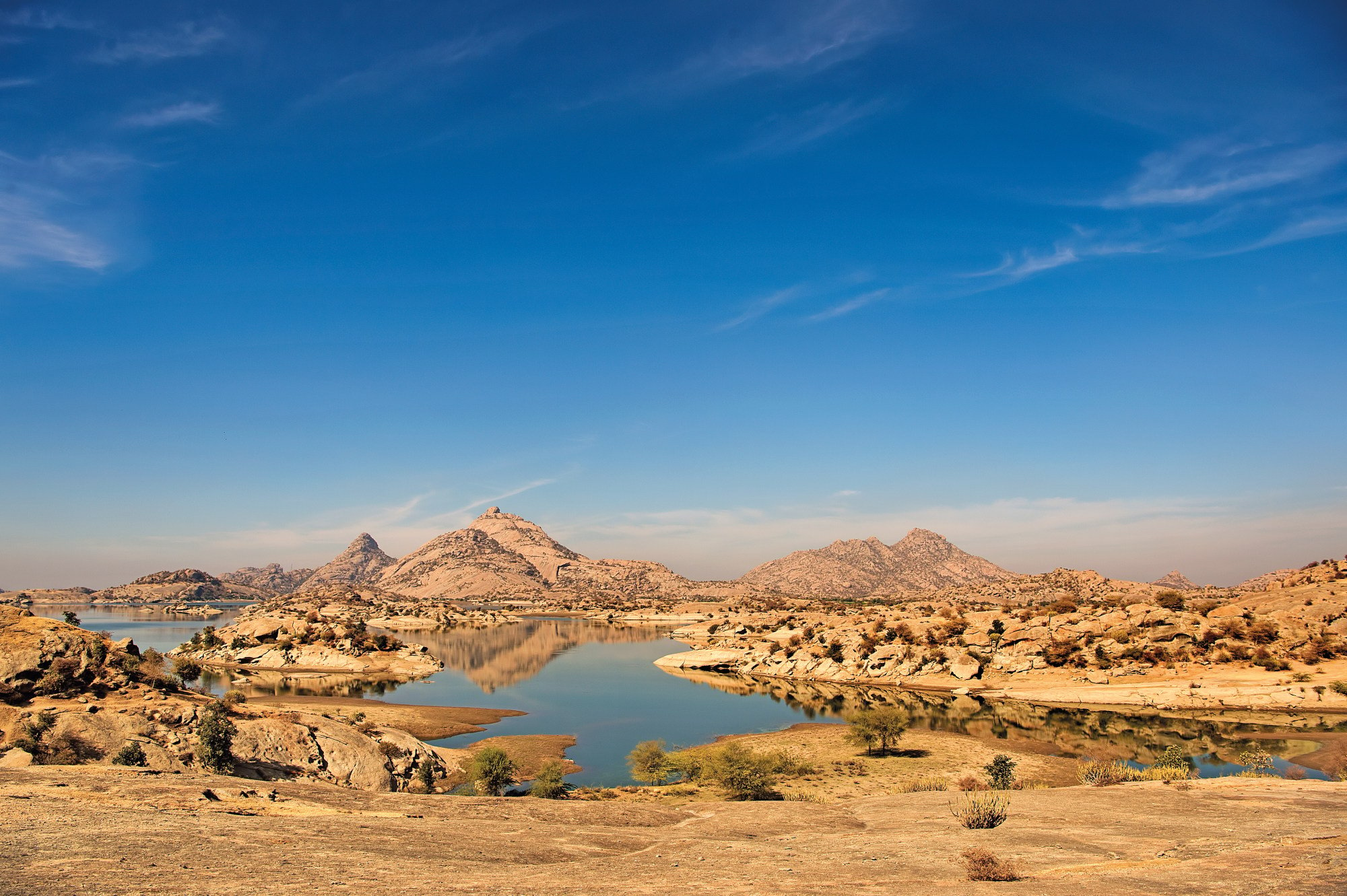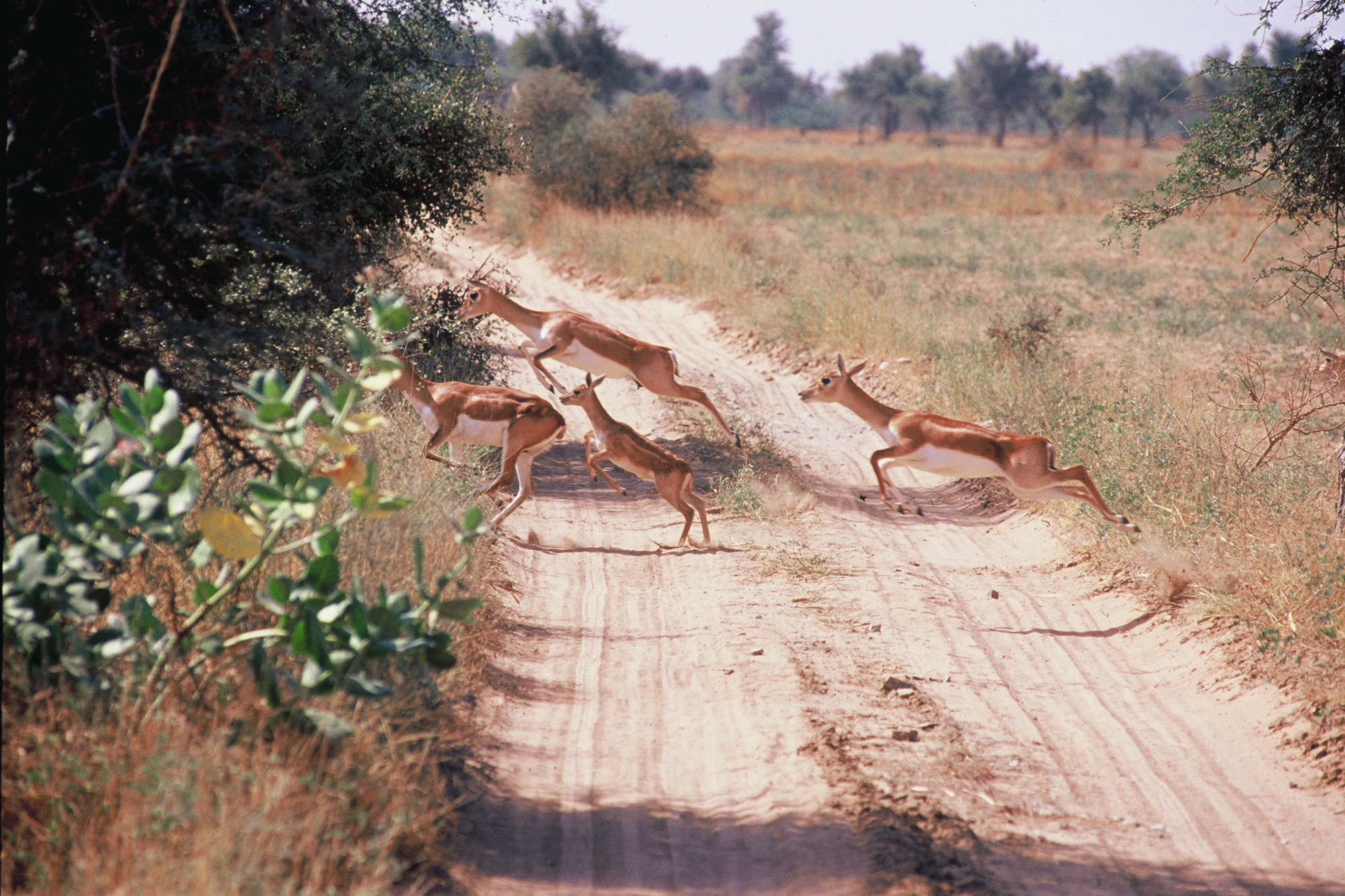Explore Rajasthan in luxury: the tribes and vibes of India’s desert oasis – stay at Suján Jawai, Suján Serai and Mihir Garh resorts to explore the golden city of Jaisalmer and the windswept sands of Jawai

It’s just before dawn and our jeep is hurtling through the 850-million-year-old granite rock formations of Jawai in Rajasthan, northwestern India. We come to an abrupt stop, and I am instantly face-to-face with Baliraja, an alpha male leopard who lays claim to these ancient hills as his territory (and has the battle scars to prove it). He looks straight through me with his piercing eyes – green at the centre, yellow round the edge – then drags a goat carcass out in front us, giving us a prime view as he devours his hard-earned breakfast.

It turns out this scene is common at Suján Jawai, a remote yet luxurious wilderness camp that couldn’t be further from the glorious and historic forts and palaces that have come to define Rajasthan as a bucket-list destination. Over the next few days, we watch these magnificent creatures go about their daily routines completely unbothered by the humans around them. In the mornings we watch them hunt before they retire to nearby caves for a nap, while late afternoons they are found basking in the rosy late sunlight. On one occasion, we watch in awe as two sisters fight it out amid the landscape’s boulder-strewn, bone-dry landscape.
Why the Desa Hay eco-resort should be your guilt-free go-to stay in Bali
Unlike Ranthambore National Park in the east, Rajasthan’s most popular tourist attraction and a tiger reserve, Jawai isn’t a protected area, yet these elusive cats have made it their home for generations. Coexisting with the surrounding indigenous communities of the seminomadic Rabari people, there are no records of any villager being attacked or killed, nor of attacks on the cats either.

With the leopards the obvious star attraction at Suján Jawai, guests are encouraged to explore the unusual harmony that exists between man and apex predator here, through the cats’ daily interactions with the region’s Rabari tribe. These indigenous people cut a striking figure in their simple white dhotis, scarlet turbans and traditional shoes soled with old tyres as they stride about the sparsely vegetated land.
Unlike the leopards, their numbers are dwindling as the younger generation head to the city, seduced by the promise of a much different future, leaving elder members to tend to the sheep and goats that have been their livelihood for centuries.
The best healthy restaurants across the globe, from 7 Hong Kong influencers
Over a decade ago, conservationists Jaisal and Anjali Singh, founders of the Suján hospitality group, decided to rewild 100 square kilometres of this traditionally agrarian area, planting indigenous plants and grasses, then reintroducing a variety of species including a species of mongoose, Asiatic wildcats, Indian pythons and rare birds. In time some of these species may become prey for the leopards, but for now the cats are content with taking stray dogs as well as goats from the Rabari flocks. The government compensates the tribespeople every time a leopard claims one of their goats and Suján Jawai also has a fund to compensate them so the villagers tolerate their losses, ensuring this remarkable cohabitation continues.

Returning to camp after a day out with the elders trekking to one of the many temples amid the worn, granite hills; or visiting the area’s eponymous dam built by a maharaja in the 1950s and home to the Indian mugger crocodile, you can unwind with a fragrant chai masala by the resort’s campfire before you retreat to your newly renovated quarters, which include nine luxury tented “rock” suites. The sleek black and white interiors are punctuated by pops of red – a nod to the Rabari’s headwear – and decorated with striking photographs taken by the owners of the leopards.
As you head west from here, closer to the Pakistan border, the landscape changes, getting even more parched as you reach the great Thar Desert, a near-mythical area steeped in 5,000 years of history and once home to the famed Indus Valley civilisation. The extreme climate, however – in summer temperatures soar as high as 50 degrees – means that you’ll want to be sure to visit during the winter months.

Towering above the ochre-coloured landscape and sand dunes is the imposing Unesco World Heritage site and “golden city” of Jaisalmer. It’s best known for its sprawling complex of yellow sandstone walls that were started in 1156 and happens to be the only “living” fort in India, with around 3,000 people still calling it home.
Travel Taiwan like a local, from fusion fine dining to mountain glamping
Previously part of the Silk Road, the region is known for its mix of Persian, Mughal and Rajput cultures. Due to its isolation, many of its ancient traditions still flourish today, especially the folk music and dance that survive in the region’s villages.
Less than an hour outside Jaisalmer is Suján Serai, a cosy haven surrounded by around 40 hectares of desert scrub. In the past, the vegetation here would be scanty but changing weather patterns in recent years are bringing out lusher green flora, and also supporting vast fields of mustard and castor oil flowers, bursting with vibrant yellow blooms. It’s a tranquil spot where your only interruption are the literal calls of the wild, including the rare Indian bustard (if you’re not a fan of bird watching when you arrive, you will be before you leave).

Inspired by the royal caravan sites of ancient Rajputana – Land of the Rajputs – the Serai is a minimalist homage to contemporary desert living, a kind of palate cleanser amid India’s often riotous colours, sounds and smells.
Rose-coloured sandstone plinths form the foundations for 21 spacious tents (the camp is dismantled from April to September) including the extravagant Royal Tented Suite, a walled-in haven of luxury boasting lounging and dining tents, a private heated plunge pool and spa.
Every detail has been painstakingly designed or selected by owner Anjali Singh, who has incorporated local crafts and textiles such as pottery, carvings, throws, cushions and blankets. Safari hats and camera bags of local goat leather are for sale, with many of the skilled artisans making these products invited to the hotel so you can watch them at work up close.
Live out your old-school Cali motel dreams in style at Palihotel Hollywood

The Ralph Lauren-meets-A Passage to India interiors include old school lamps and a writing desk that screams at you to snatch up a pen and record your experiences – breakfast at a local’s organic farm, an Ayurvedic spa treatment or sundowners on a desert dune with no other people in sight, save your private butler.
Serai’s true magic, however, comes after the sun sets, as the alcoves and walkways are lined with hundreds of candles. On our last evening, we spent hours talking by candlelight with our butler Timbal, who regaled us with stories about the nearby village where he grew up, then searched the inky night sky for shooting stars and constellations.
Rajasthan is home to over 250 forts, which provide a glimpse into the region’s cultural and architectural heritage, but Mihir Garh, just an hour from Jodhpur, is an anomaly.

This modern, fairy-tale sandcastle – its name means “fort of sun” – is a labour of love that was built from scratch by husband-and-wife team Sidharth and Rashmi Singh. Sidharth, a 14th generation descendant of one of oldest noble families in Rohet, is no stranger to hospitality. His father transformed the family’s crumbling haveli into Rohet Garh, a stunning heritage hotel in the early 1990s, while he recently converted part of their private home in Jodhpur city into the ultra-chic boutique hotel, the House of Rohet.
Who are the 10 richest billionaires in Malaysia in 2024? Net worths, ranked
The idea for Mihir Garh came when the couple visited one of their favourite sand dunes to watch the sunset. This romantic encounter inspired them to build a fortress from scratch – complete with turrets, spiral staircases and watchtowers – so beginning a painstaking two-year project that would employ over a hundred of the region’s carpenters, craftsmen and artisans.
Each of the nine suites in Mihir Garh is a love letter to Rajasthani crafts. Rashmi conceived every detail, from the bespoke furniture, antiques and carved wood ceilings (inspired by the originals at Rohet Garh) to the intricately embroidered fabrics, handwoven rugs and clay fireplaces that glisten with traditional mirror work created by the area’s rural craftswomen. A private jacuzzi or plunge pool is an indulgent finishing touch, although there’s also a communal infinity pool that’s equally spectacular.

It’s easy to get lost in the fort itself, with its bougainvillea-covered courtyards, fountains, alcoves, sunset terraces and Moroccan-inspired lounges. I find myself spending most of the time on my private terrace watching antelopes, including the endangered black buck, or Singh’s prized Marwari horses, galloping across the scrubland (there’s a stable of them should you wish to go riding, as Madonna did during her stay).
Need a digital detox? This luxury Bali resort might finally get you off your phone
It’s also at Mihir Garh that I forge a deeper connection with the Rajasthani culture. Their signature village safari – Singh’s father pioneered the programme in the 1980s – brings you to the private homes of the elusive nature-loving Bishnoi community, which was founded in the late 15th century. These guardians of Rajasthan still follow a series of 29 rules that promise to preserve and protect all forms of life.
I chat with the local women who live in huts made of cow dung and clay, fail in an attempt at making a vase with the village ceramicist, and attend a traditional opium ceremony with the elders.

On my final evening, I am transported by camel and cart to a rustic shikar barbecue dinner in the wilderness.
After walking down a candlelit path, I am brought into a clearing scattered with handwoven rugs, cushions and blankets. The crackling of the bonfire is drowned out by the intoxicating beats of Manganiyar folk music played by gypsies from the famed Kalbelia snake charmer tribe.
My two-week journey teaches me that the true spirit of Rajasthan isn’t found in its extravagant palaces, forts or hotels, memorable though they are. Instead it is found in the simple, uncontrived human interactions with the communities that have made it one of the most magical and unforgettable places in India.
What to pack
1. Etro shirt

2. Chloé trousers

3. Bulgari Serpenti Forever bag

4. Tod’s sandals


- Conservationists Jaisal and Anjali Singh, founders of the Suján hospitality group, rewilded an area of the Jawai, introducing mongoose species, Asiatic wildcats, Indian pythons and rare birds
- Suján Serai is an hour from the fort city of Jaisalmer, a Unesco World Heritage site, while the resort of Mihir Garh is a modern recreation of a desert fort outside Jodhpur